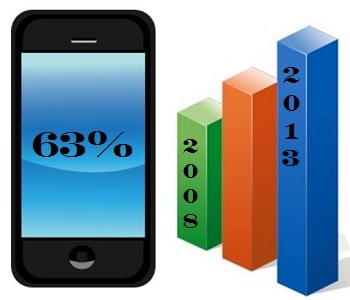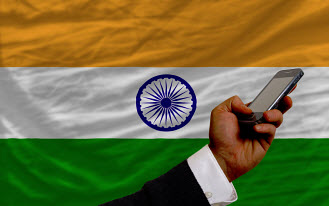In the United Kingdom, the average 2013 spent over mobile commerce was £199.
Different mcommerce trends have become quite commonplace in the United Kingdom with four out of every ten smartphone owners having made a direct purchase through their smartphones and one in six have said that they have taken part in showrooming.
Among shoppers in the United Kingdom, 55 percent have used their mobile devices in store.
While in store, mcommerce activity often consisted of price comparisons, online. This was the case among 54 percent of the people who used their mobile devices while in brick and mortar shops. Another 41 percent had taken pictures so that they would be able to view them in the future. Forty six percent would research the items that they were seeing live in the store. One in every six were “showrooming”, which involves checking out an item in a store in person, but then using the smartphone or tablet to find a better price for it online and purchase it there, instead.
This mcommerce data was based on a survey of 1,000 owners of smartphones in the United Kingdom.
The research was published in a report called “’Agile Consumer 2013”. It was conducted by Cheil Worldwide. It also determined that half of all users of smartphones and tablets had shopping in mind when they purchased their mobile devices.
According to Simon Hathaway, the president of shopper marketing and retail operations at Cheil Worldwide, “The smartphone has become a key element of how we shop, and all evidence points to it having been a bumper post-Christmas sales period for m-commerce.” He added that there has been a near doubling in the amount of time that is spent purchasing products and services over smartphones over the last five years.
Hathaway also stated that even when the phone is not being used for direct mcommerce purchases, it is still a part of the buying process as consumers use it to compare, research, and seek the opinions of others. This, he said, is changing the retail experience entirely “as we become smartphone-focused shoppers – or what we’re calling ‘Agile Consumers’.”
BWild |
February 10, 2014
Retail environment of India is beginning to evolve
India’s retail climate is beginning to change. In the past, a common saying among consumers has been “can’t touch, won’t buy,” but the advent of mobile technology is beginning to change the way people feel about purchasing products. As Internet access becomes more common throughout the country, many Indian consumers are beginning to turn to e-commerce for everything they need. As more people get their hands of smartphones and tablets, they are beginning to purchase products using these devices, hence a growing focus in the retail sector on mobile commerce.
E-commerce is experiencing strong growth as consumers become more mobile
India’s e-commerce business grew by 80% in 2013, according to Flipkart, one of the country’s leading e-commerce firms. The company notes that this is the most significant growth e-ecommerce has seen in the country in the past several years. The momentum behind e-commerce is expected to remain strong for the foreseeable future. Notably, many consumers are beginning to purchase products from online retailers with their mobile devices rather than with home computers.
Retailers are focusing more heavily on mobile commerce
Flipkart suggests that consumer mentality is beginning to shift at a rapid pace. People are beginning to feel that mobile commerce represents a more convenient form of shopping. Consumers are not making the move toward mobile shopping on their own of course, as retailers are also beginning to focus more heavily on the mobile crowd. India’s e-commerce market is currently valued at approximately $13 billion and retailers are beginning to see a great deal of potential in the mobile space when it comes to the future of e-commerce.
E-commerce market expected to hit $70 billion by 2020
The e-commerce market in India is expected to reach $70 billion by 2020 as more retailers begin focusing on mobile commerce. Consumers are quickly becoming convinced that mobile payments will have a major role to play in the future of their shopping. It may be some time before mobile becomes the most favored shopping platform in India, however, as many people are likely to remain supportive of traditional, physical stores.



